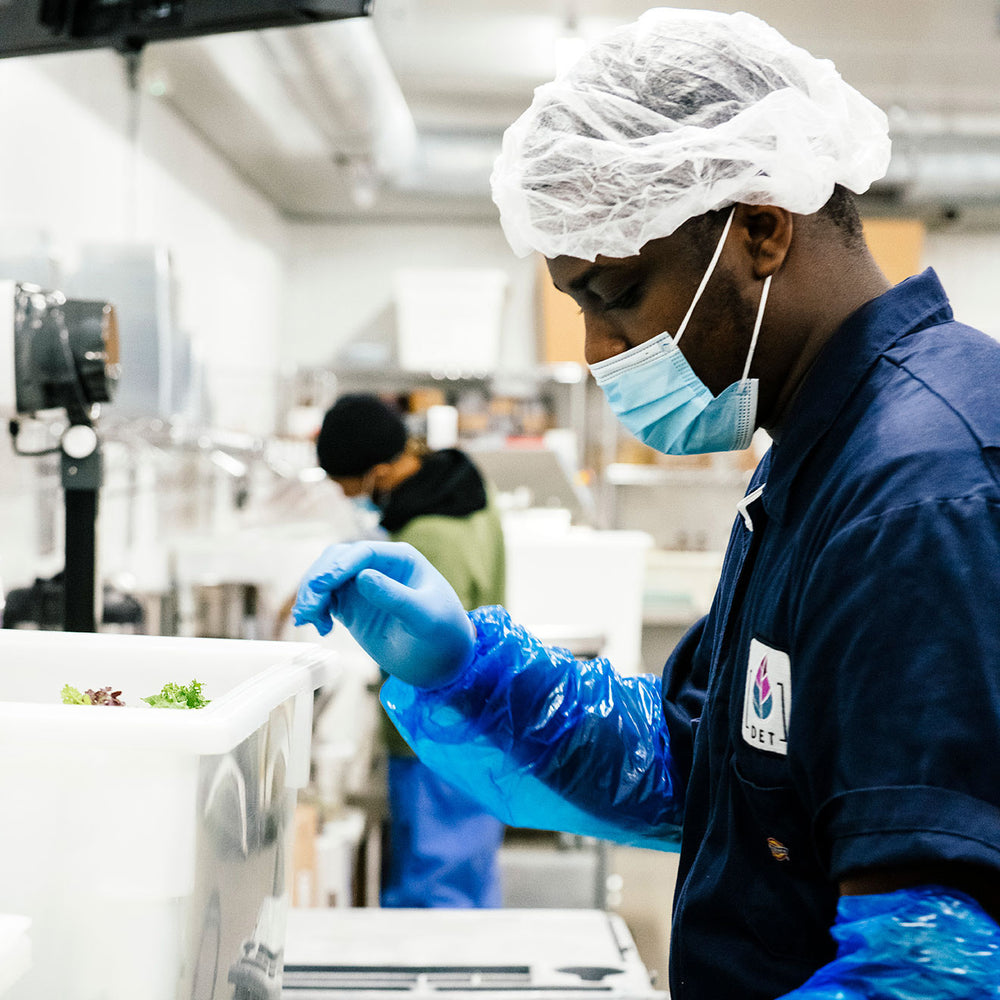
Simon, our Leader of Food Safety, breaks down last year's Listeria outbreak at Dole and how we take extra measures to ensure it won't happen in our farm.

The Overview
Let's talk about a recent outbreak of foodborne illness in leafy greens. In December of last year, the FDA announced an investigation into an outbreak of Listeria monocytogenes in relation to ready-to-eat salads from one of Dole's processing facilities. In fact, into this year, the FDA was investigating two different outbreaks of Listeria in prepackaged salads (along with two investigations into E. coli outbreaks).
This outbreak is particularly interesting because the listeria strain responsible has been linked to several other sporadic illnesses dating all the way back to 2014! This means that they have likely been dealing with the same source of Listeria occasionally making its way into their food for eight years. This also means that any preventative measures their facility had in place, such as equipment and food contact surface sanitation, were likely not fully effective. It wasn't until April of this year that Dole detected the presence of Listeria on a piece of equipment in their Yuma, AZ facility. It took over 3 months for them to pinpoint how listeria made its way into their ready-to-eat salads!
The Bigger Picture
The commonness of outbreaks may seem surprising to those that are not familiar with food processing since many people think of produce as being "cleaner" than many other foods. These other foods go through certain processing steps that help keep them safer. Most foods we eat are usually cooked, either by a food processing facility (canned chicken is a good example) or by us, in our kitchens, when we're preparing a meal. When food is cooked thoroughly, it will eliminate most pathogens and make the food safe to eat, even if it was contaminated with something like E. coli. This is called a "kill step".
Leafy greens don't usually have this kill step. Consequently, producers of ready-to-eat produce, such as ourselves, need to be especially vigilant in preventing such contaminants from ever coming in contact with our produce in the first place.
How We Keep Our Food Safe
Ready-to-eat foods, such as salads, are extremely vulnerable to contamination. Just a single viable cell of a pathogen, such as Listeria or E. coli, finding its way to a single plant could lead to an entire batch of produce or salads being rendered unsafe to eat. To keep our food as safe as possible, we have made prevention and monitoring key parts of our food safety plan here at Planted Detroit.
We maintain extensive biosecurity procedures to mitigate the risk to our food at every stage of our process and it all starts with the seeds. Each seed lot we use in our production process is first lab-tested for listeria, salmonella, and E. coli before the seeds make it into the farm. This prevents contamination at the seeding stage. After the test results come back clear, the seeds are planted, germinated, and eventually moved into our nursery system where they are watered and grow to maturity. To monitor this part of the process we collect weekly samples of our irrigation water and send them to a lab to be tested for E. coli and generic coliforms (a general measure of water cleanliness).
After growing in the nursery to their desire stage, our plants are ready to be harvested! Our harvesting machine is tested twice a week for listeria and is thoroughly cleaned, along with every other food contact surface in our facility, every day. Several important food contact surfaces, including the harvester, are also tested every day for ATP levels, an indicator for the amount of living material on a surface. The ATP test results ensure that the surfaces are free of unwanted levels of microorganisms before production begins. Random environmental tests for Listeria are also conducted monthly to survey areas that may be harboring an unwanted colony.
These measures, in addition to having our plants seeded, grown, and harvested all within our controlled environment, mitigate and help to eliminate a whole slew of risk factors that conventionally grown food need to contend with. A part of controlling our growing environment means keeping every day pests & bacteria out and we do that using a filtering intake system and pressurization. Whenever a door into the farm is opened, the pressurized nature of the farm causes a gush of air to be pushed out into the non-biosecure areas, keeping unfiltered air out as long as the door is open. This method also mitigates the chance of potential pathogens and spoilage organisms entering through airborne droplets or spores.
Together, we use all of these factors to support our goal of having our greens be the freshest and safest greens available!
